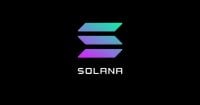Leveraging the Yen’s Worldwide Liquidity, Japan Introduces JPYC to Propel On-Chain Foreign Exchange Markets
- Japan launches JPYC, its first yen-backed stablecoin, pegged 1:1 to yen and backed by bank deposits and JGBs. - JPYC aims to enable USD/JPY on-chain trading, leveraging Japan's forex dominance and post-1980s capital liberalization. - Unlike dollar-backed stablecoins, JPYC earns revenue from JGB interest, benefiting from Japan's rising bond yields. - Japan's regulatory clarity contrasts with South Korea/Taiwan's restrictions, positioning yen as a global on-chain settlement asset. - Despite strategic advan
Japan has introduced its first stablecoin backed by the yen, known as JPYC, representing a major advancement in the country's efforts to incorporate digital assets into its financial system. Developed by the Tokyo-based fintech company JPYC Inc., the token maintains a 1:1 peg to the Japanese yen and can be fully redeemed, with its value supported by deposits in Japanese banks and government bonds. This sets it apart from similar initiatives in South Korea and Taiwan, where local currency usage is tightly regulated, according to
JPYC made its debut on October 27, 2025, alongside the launch of JPYC EX, a specialized platform for issuing and redeeming the stablecoin in compliance with Japan’s rigorous anti-money laundering laws, as detailed by

The yen-based stablecoin could play a key role in enabling USD/JPY trading pairs on decentralized exchanges, leveraging Japan’s position as a major player in the global foreign exchange market. The yen is currently the world’s third most traded currency, accounting for 16.85% of daily forex activity, as highlighted by CoinDesk. With both Japan and the U.S. now regulating stablecoins tied to their national currencies, the combination of USD and JPYC tokens could form a strong on-chain trading pair, potentially supporting crypto settlements across Asia, according to CoinDesk.
Japan’s clear regulatory framework gives it an edge over other Asian countries. While South Korea and Taiwan restrict the offshore use of their currencies, Japan’s capital control reforms since the 1980s have made the yen highly liquid internationally, which is crucial for stablecoin adoption. In contrast, although Hong Kong’s dollar is pegged to the U.S. dollar and freely traded offshore, it does not share the same onshore-offshore flexibility.
JPYC’s revenue model is unique as well. Instead of charging transaction fees, the company earns income from interest on its holdings of Japanese government bonds—a strategy made possible by the recent increase in bond yields above 3%, according to CoinDesk. This approach differs from dollar-backed stablecoins like
JPYC is part of a broader movement in Japan’s stablecoin sector. In August, Monex Group revealed plans for its own yen-pegged stablecoin, and three major banks—Mitsubishi UFJ Financial Group, Sumitomo Mitsui Banking Corp., and Mizuho—are working together on a joint initiative using the Progmat platform, according to
Despite its promising position, JPYC still faces uncertainty regarding demand. Although the yen’s legal status and convertibility provide a solid base, international traders may question the necessity of another fiat-backed stablecoin besides the U.S. dollar. For example, euro-backed stablecoins have struggled to gain widespread use, even though the euro is a major global currency, as CoinDesk pointed out.
Disclaimer: The content of this article solely reflects the author's opinion and does not represent the platform in any capacity. This article is not intended to serve as a reference for making investment decisions.
You may also like
Solana News Update: Hong Kong Strikes a Balance Between Crypto Prudence and Innovation as the Debut Solana ETF Goes Live
- Hong Kong's SFC plans to study corporate crypto treasury practices and issue guidance, amid rising institutional interest in blockchain strategies. - World's first Solana ETF (SOL) launched on HKSE on October 27, 2025, signaling traditional-finance integration with decentralized ecosystems. - Ant Group files Hong Kong trademarks for AntCoin and blockchain services, positioning to leverage regulatory clarity amid mainland restrictions. - Ethereum's $4,200 breakout faces $4,100 resistance, with analysts de

Ethereum News Today: Ethereum Faces $4,300 Test: Bulls Aim for $6,000 While Bears Watch for a Drop to $3,900
- Ethereum tests $4,300 resistance amid bullish/bearish technical divergence after four-year consolidation. - Institutional ETFs show $246M inflows vs. $7M outflows, while analysts project $5.8K-$10K targets by 2026-2028. - Key support/resistance levels at $4,064-$4,020 and $4,300 could determine $3.9K decline or $4.8K breakout. - Macroeconomic risks include Fed policy shifts, Layer 1 competition, and lingering bearish sentiment from October liquidations.

Hyperliquid News Today: Increased Interest from Institutions Fuels Altcoin ETF Expansion as SEC Simplifies Approval Process
- 21Shares and Bitwise launch altcoin ETFs (HYPE, BSOL) as SEC accelerates crypto fund approvals, with over 90 applications pending. - Bitwise's Solana Staking ETF (BSOL) sees $72.4M trading volume and $69.5M inflows, outperforming competitors like Grayscale's GSOL. - HYPE token surges 32% to $47.55 amid institutional demand, while XRP gains 88% from monthly lows due to ETF inflows and futures growth. - Bitcoin rebounds above $110,000 with $446.6M ETF inflows, as altcoin ETFs gain traction for diversified

Solana Company updates $SOL holdings with 1M token increase
